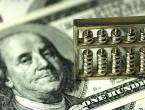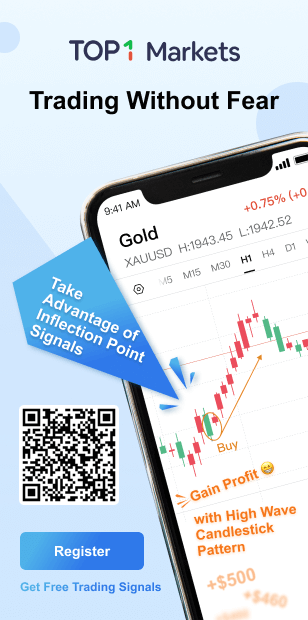Golden Weekly Review: Soaring inflation expectations support the rise in gold prices, but Powell hit the market
Spot gold trended positively this week, rising 1.42% to 1,792.65 US dollars per ounce, the second consecutive week of gains. After the market basically digested the Fed’s expectations of reducing bond purchases in November, the rise in gold prices this week was mainly driven by inflation expectations. In addition, the continuous decline in the U.S. dollar index also supported gold prices, but this week’s Fed officials’ speeches and U.S. stocks reached new record highs. Limiting the rise of gold prices, especially Powell's speech on Friday made the rise of gold prices retreat sharply.
Five-year inflation expectations in the U.S. Treasury market rise above 3% for the first time since record
Bond traders’ inflation expectations for the next five years have exceeded 3% for the first time on record.
The 5-year break-even inflation rate, which measures market inflation expectations, climbed more than 9 basis points to 3.007% on Friday, the highest level since the data was recorded in 2002.
Investors are buying inflation-preserving bonds (TIPS) because the Fed is allowing inflation to rise sharply as the economy recovers from the new crown epidemic. U.S. Treasury yields have climbed, and the demand for inflation-protected bonds has kept their yields relatively stable. The difference between the TIPS yield and the ordinary Treasury bond yield represents the level of inflation required to equalize the yield.
" More and more people are realizing that supply chain disruptions may last longer than anyone thought ," said Priya Misra, a strategist at TD Securities. The new crown epidemic has disrupted logistics, transportation and caused global port congestion, while labor shortages and the recent energy crisis have made the situation worse. She added that the trend in the breakeven inflation rate reflects the risk that if inflation is caused by a supply chain interruption, even if the Fed raises interest rates, it will not help.
Misra also pointed out that although the 5-year break-even inflation rate has risen sharply, the 5-year 5-year forward inflation swap rate is still lower than the year's high set in May. The interest rate is also a measure of the market’s forecast of inflation.
"The Fed may be watching this indicator to see if inflation expectations are getting out of control," she said. If there is a longer-term trend, "it may actually force the Fed to take action."
Short-term US Treasury yields this week hit their highest level since the outbreak of the new crown epidemic, and concerns about accelerating inflation prompted traders to expect the Fed to raise interest rates twice before the end of next year.
Kitco.com senior analyst Jim Wyckoff said that problematic price inflation has become more worrying, and the dollar index has fallen this week, supporting gold and silver prices . Gold is often seen as a hedge against inflation.
Wyckoff said that the gold and silver markets have finally realized that global inflation is rising, and this may not only be a short-term trend. Since late September, the price of gold has been rising, and this week the price of silver has reached a 6-week high.
History shows that when consumer and producer prices rise, the inflation-haven nature of hard assets such as precious metals is more popular.
However, due to concerns about global economic growth and inflation (the latter is good for gold prices), and rising yields (which weaken the attractiveness of non-yielding precious metals), gold prices have fluctuated within a certain range since July.
(Spot gold daily chart)
Fed Chairman Powell believes it’s time to scale back bond purchases
Fed Chairman Powell said on Friday that the Fed should begin to reduce its support for the economy by reducing asset purchases, but should not touch interest rate measures. Although the U.S. non-agricultural data has been significantly lower than expected for two consecutive months, the severe inflation situation has forced the Fed to come to this point.
“I do think it’s time to reduce debt purchases; but I don’t think it’s time to raise interest rates,” Powell said in an online appearance before a conference, noting that compared with before the new crown epidemic, the United States is still reducing 5 million job opportunities. He also reiterated his view that as the pressure of the epidemic subsides, high inflation may weaken next year .
Powell said on Friday that if supply chain restrictions ease as expected, the service industry is more fully open, and employment growth accelerates, the Fed’s full employment target is "very likely" to be achieved next year. With the surge in new crown cases, employment growth in August and September slowed sharply.
He said that despite this, it is not certain that if inflation continues to rise, the Fed will “definitely” take action . Inflation has been higher than initially expected and has lasted longer.
The Fed has already hinted that it may start to reduce the monthly purchases of US$120 billion in public debt and mortgage-backed securities starting next month and complete it by mid-2022.
About half of Fed policymakers believe that interest rates will need to be raised in 2022, and a few believe that interest rates may have to be raised before the summer. The other half of U.S. interest rate setters believe that it is inappropriate to raise interest rates before 2023. Among them, Minneapolis Federal Reserve Chairman Kashkari insisted on raising interest rates in 2024.
Chintan Karnani, director of research at Insignia Consultants, said that gold gave up most of Friday's early gains after Powell mentioned cuts in debt purchases.
Karnani said that after Powell’s speech, gold fell from its intraday high due to weekend profit settlement and technical selling.
S&P 500 Index and Dow Index Set Records This Week
The US stock market S&P 500 index set a record closing high on Thursday, closing for the seventh consecutive trading day. The Dow Jones Industrial Index set a record closing high for the first time on Friday since August 16.
The three major stock indexes have risen for the third consecutive week for the first time since early July. The S&P 500 index rose 1.6% this week, and the Dow and Nasdaq rose 1.1% and 1.3%, respectively.
(Dow daily chart)
According to Refinitiv data, analysts have raised their expectations for third-quarter earnings growth for S&P 500 companies. They are now expected to increase by 34.8% year-on-year and 31.9% earlier this week.
However, Brad McMillan, Chief Investment Officer of Commonwealth Financial Network, said that some investors have set their sights beyond these impressive earnings figures.
McMillan said: "The real question of whether it can push the stock market higher is whether the economy will improve, because performance is in the past tense."
Data shows that the strong growth of corporate activity in the United States in October indicates that as the new crown epidemic subsided, economic growth rebounded at the beginning of the fourth quarter, but the shortage of labor and raw materials still restricted the manufacturing industry.
Shawn Cruz, senior market strategist at TD ameritrade, said that the low level of the CBOE market volatility index means that although there is widespread concern that supply chain issues will push up costs, investors believe that the stock market will not fall or rise sharply in the future.
The stock market’s record high has boosted the market’s risk sentiment, which is negative for the safe-haven gold.
The U.S. dollar index fell back from its high for two consecutive weeks
After the U.S. dollar index hit a one-year high last week, investors took profits. At that time, fears that inflation would remain high for a longer period of time prompted investors to advance the time of the Fed's first interest rate hike to mid-2022.
(Daily chart of U.S. dollar index)
Now "There are some positions going out, and we obviously see that the U.S. dollar has strengthened since the Fed meeting in September," said Mazen Issa, senior foreign exchange strategist at TD Securities in New York. "This also coincides with the seasonal trend of the U.S. dollar weakening before the end of the month. ."
The dollar’s rise was also weakened by investors’ expectations of faster interest rate hikes in other currencies.
However, Issa expects the U.S. dollar to regain momentum, as global central banks may respond to aggressive bets on interest rate hikes, while the Fed may maintain a relatively hawkish stance and continue to scale back its bond purchase plans.
Issa said: "Once we are hit back by other central banks, and the Fed promises to reduce the size of debt purchases, we should see the dollar fall really shallow."
The US dollar index was also hit by rising risk sentiment. The panic index fell for the third consecutive week this week. The stock market continued to rise. The market chased higher profits and abandoned the safe-haven US dollar.
Fed officials support reduction in debt purchases in November
San Francisco Fed President Daley said on Friday that the recent "stunner" inflation readings were driven by supply chain disruptions. This trend will fade like an epidemic, and the Fed's decision not to raise interest rates is correct.
Cleveland Federal Reserve Chairman Meester said on Wednesday that the Fed should begin to reduce the pace of asset purchases soon, but it is unlikely to raise interest rates in the short term.
On the same day, Fed Governor Quarles stated that he was in favor of slowing down monetary stimulus measures starting next month, and expressed concern about the expansion of inflationary pressures that may require policy responses.
Quarles said he agrees that the current high inflation is "temporary" and that the central bank's monetary policy is not lagging behind.
On Tuesday, Fed Governor Waller said that the Fed should begin to reduce its bond purchase program next month, but raising interest rates may "take some time ."
Waller said: "Although we still have room for improvement in terms of employment, I believe we have made enough progress and the underweight asset purchase should begin after our next FOMC meeting in two weeks."
"I believe that the pace of continuous improvement in the labor market will be gradual. I expect inflation to slow down, which means that there is still some time to raise interest rates." Significantly higher than 2% for a long time in 2022, then I will support an interest rate hike earlier than I currently expect."











